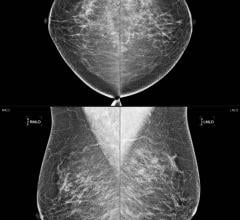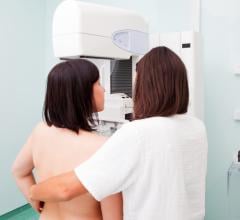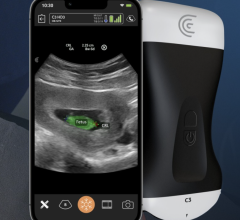September 20, 2013 — When public health budgets are constrained, mammography screening should begin later and occur less frequently, a cost-effectiveness analysis for California’s Every Woman Counts (EWC) program concludes.
As outlined in a paper published online Sept. 16 in Value in Health, the analysis focused on several policy questions, including the effect of starting screening at age 50 instead of 40 and of screening every two years instead of every year on EWC program costs and outcomes. The study was conducted in response to recent government funding cutbacks.
“This was not a clinical recommendation, but rather was intended to help a public health program use its resources to the greatest effectiveness,” said lead author Joy Melnikow, director of the UC Davis Center for Healthcare Policy and Research.
EWC, administered through the California Department of Public Health Cancer Detection Section, is one of the largest of 68 Centers for Disease Control and Prevention-funded programs across the country. It reimburses providers at Medi-Cal rates (Medi-Cal is California’s version of Medicaid) for screening and diagnostic services for breast and cervical cancers. It provides services to women who are not eligible for Medi-Cal, who otherwise lack coverage for breast and cervical cancer screening, and whose income is less than 200 percent of the federal poverty threshold.
The study, conducted by UC Davis and EWC researchers, was based on a sophisticated microsimulation model that projected outcomes based on existing program data. It found that starting mammography screening biennially at age 50 was strongly supported by the model results, given that program funding did not allow screening of the full population of eligible women beginning at age 40.
“Because breast cancer incidence goes up with age, using program funds to screen all eligible women over age 50 will have a greater impact on reducing breast cancer deaths,” said Melnikow. “The goal was to advise a public health program in a timeframe that could be helpful, given that cost-effectiveness analysis typically takes a long time to conduct – often too long to be of use in a quickly changing policy environment.”
The United States Preventive Services Task Force, a government medical task force, in 2009 recommended the same changes in breast cancer screening guidelines, suggesting that most women should not begin getting routine mammograms until age 50, and then only once every two years.
“The Task Force was asking a different question,” explains Melnikow, who became a member of the Task Force after the breast cancer screening recommendations vote. “In that case, cost-effectiveness and policy weren’t factors. Instead, the Task Force looked at recommendations for screening of women exclusively from a clinical point of view.”
Melnikow, a UC Davis professor of Family and Community Medicine, points out that the EWC analysis has implications for other budget-constrained public programs around the country.
“This study is important for administrators who are doing their best to run public health programs with limited resources. We found that although it can be challenging, it is by no means impossible to create carefully constructed cost-effectiveness analysis models quickly enough to be useful to programs and policy makers as they render important resource-allocation decisions.”
Other study authors were Daniel J. Tancredi, Zhuo Yang, Dominique Ritley, Yun Jiang and Christina Slee, all of the UC Davis Center for Healthcare Policy and Research, UC Davis, along with Svetlana Popova, Phillip Rylett, Kirsten Knutson and Sherie Smalley, of the Every Woman Counts program, Cancer Detection Section.
Funding for the study was provided by the California Program on Access to Care, UC Berkeley School of Public Health in cooperation with the UC Office of the President.
For more information, visit www.ucdmc.ucdavis.edu/chpr


 July 29, 2024
July 29, 2024 








